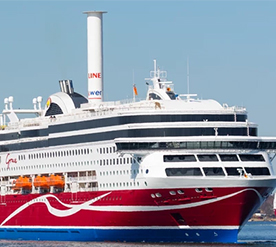Kansainvälinen liiketoiminta
China Branding, IPR and Localization Requirements

- Etusivu
- Blogi
- Kansainvälinen liiketoiminta
- China Branding, IPR and Localization Requirements
Western brand managers often lack in-depth cultural understanding of Chinese purchasing behavior, the necessity of building popularity online and consumer purchase motivations in China. Even the well-established global brands often underestimate the importance of peculiar cultural aspects and end up behaving like elephants in a porcelain shop.
The following text explains some key issues and sheds light on how to approach and handle intellectual property rights in China in a professional manner:
History as an Advantage or a Disadvantage?
 Foreign companies tend to enter the Chinese market with their experiences based on Western markets and expect the market to accept the brand and their products as they have been accustomed to in the West. These decisions are often made based on the assumption that the China market is like any other market in the World, leading to much needed `Chinese Branding` being neglected.
Foreign companies tend to enter the Chinese market with their experiences based on Western markets and expect the market to accept the brand and their products as they have been accustomed to in the West. These decisions are often made based on the assumption that the China market is like any other market in the World, leading to much needed `Chinese Branding` being neglected.
In order to enter the market successfully, a completely new approach and marketing skills are required to get the products to the other side of the Great Wall. Still, many well-known brands typically struggle and underestimate the importance of this.
Instead of drawing conclusions from previous success in the West, the best approach to the China market probably would be a humble entry while accepting that the company is entering the market “barefoot.”
China market for most Western companies often starts with conquering a niche in the market within two to three locations in China first, such as Beijing, Shanghai and Shenzhen, even though marketing consultants in their reports picture a market of 1.3 billion consumers.
Regional differences will make the market entry more confusing. In Beijing purchasing behaviour leans towards domestic-made products whereas in the South, foreign products are more sought-after than their Chinese counterparts.
Therefore, new behaviour is required, which often takes time for foreign companies to understand and even longer for them to implement. Nevertheless, understanding of the Chinese consumer motivations is definitely not on similar level to that in the West and novel approaches must be developed.
Proper Branding and Trademark Localization
 Chinese Intellectual Property protection laws are in constant progress for betterment, but often the procedures regarding how to properly protect trademarks is alien to Western companies.
Chinese Intellectual Property protection laws are in constant progress for betterment, but often the procedures regarding how to properly protect trademarks is alien to Western companies.
A key issue tends to be that Western legal advisers for these entering companies do not possess understanding of the necessity of China language branding requirements. Many foreign brands bluntly just translate their materials into Chinese using a proposal of their filing agents’ office clerks who do not have any knowledge of the brand itself, brand promises or the proper mindset when it comes to branding.
Claims of language barriers and legal hurdles are only excuses for not properly serving clients when entering the China market. This ignorance combined with blatant gross-negligence has cost massive amounts of money for Western brands in China. But how to enter the market properly and build-up a truly meaningful brand in China then?
Working with Professionals and Local Partners in the Know

The key to getting the fundamentals right is working with professionals that have had long-term presence at the China market and partnering with local counterparts from Hong Kong at market entry phase.
However, simply copying business models that have worked in Hong Kong or elsewhere in the Asia Pacific is not enough. Many companies have had to learn their lessons here the by not having put enough effort initially for adapting their approach to the needs of the Chinese consumers in the Mainland. Instead, they thought that Chinese consumers are all the same no matter where they might be.
The Chinese market is indeed a hard nut to crack for Western companies since the Chinese consumer mindset should first of all be understood, brand & products must look modern and quality promise will go far beyond the products and services they are marketing in China.
Finally, companies should understand that in order to succeed in China, brands must design products specifically for the China market, make decisions locally and deliver message in a digitalized format in China.
 L’Oréal China Hit the Market by Live Streaming
L’Oréal China Hit the Market by Live Streaming
If Olympic gold medals for Marketing Excellence were given, the winner of Chinese Singles Day on November 11th 2019 would definitely be L’Oréal China. The French company engaged in co-operation with Tmall Innovation Center by live streaming to target a younger generation of beauty product consumers, an audience eager for new products and the time to stay online late.
L’Oréal created a new skincare cream aimed at younger & price-conscious consumers, who are mainly new customers to the L’Oréal brand. Instead of having the advertising focus on combatting skin dryness & oiliness, the real driver was a 24-hour live marathon broadcasting the main shopping day and some additional pre-sales livestreams.
While many other brands utilize celebrities and brand ambassadors to promote their products in China, L’Oréal changed the approach to active content-driven consumer engagement tailored to the local market.
L’Oréal reported a seven-fold increase in annual gross sales with such approach involving professional beauty advisers and influencers in live broadcasts and consumer Q&A sessions.
Trademark Registration in China
Case Norsepower
Norsepower, a Finnish company developing auxiliary wind propulsion systems with operations in China, has protected the technology with Patents and Trademarks.
Trademark should always be registered prior to starting business activities in China, like Norsepower did.
Norsepower’s Chinese Trademark was filed in 2017 as “Norway power” (because NORSE = old term which also refers to Norway).
However no country name can be registered as trademark in China, and the trademark application was rejected by the China Trademark Office in 2019.
Special expertise (in this case Fintrade) was required to draft, check, choose and propose to Norsepower another Chinese Trademark.
NORSE: ”诺实“ (with a Chinese Pinyin pronouciation of [nuo][shi]).
”诺” has a meaning of ”promise”, while ”实” has a meaning of ”realize” So, the term may have a meaning of having promises realized and POWER 动力.
When filing a Chinese trademark application, instead of trying to make connection with the English mark through translation or transliteration, a good understanding of the function of the product or service in question might be helpful to choose the right Chinese characters, which reflect the mission/spirit of the company without violating the Chinese trademark laws and regulations.
 In Norsepower’s case, the new trademark application was filed in December 2019 by Fintrade as follows:
In Norsepower’s case, the new trademark application was filed in December 2019 by Fintrade as follows:
诺 实 动 力
Trademark Registration requires creativity and in depth understanding of the filing process. Using seasoned Trademark specialists as service providers is needed.
